What Is a Backlink
A backlink is basically a link to one website from another one. It is very important for SEO campaigns, as search engines define the credibility of blogs depending on the number and quality of their backlinks. For this reason, acquiring such links has a direct bearing on the website ranking.
Backlinks differ according to the type of resource. The more reliable is the website that backlinks to your blog, the more valuable is this link. Google opposes some link types, mostly, paid ones and links from low-quality websites, so you might want to avoid such resources. With that in mind, let’s see what links search engines consider valuable.
What Makes a Backlink Valuable
Basically, the harder a backlink is to acquire, the more valuable it is in terms of SEO. There are three main factors that influence the link’s credibility:
- The reputation of the resource hosting this backlink. A backlink from a well-recognized website in your niche affects your ranking positively, while a link from some lesser-known blog might downgrade its position. There are many techniques to check the domain’s authority such as the MozBar, which is a browser extension for Chrome, Link Explorer and many other SEO tools.
- Do-follow/no-follow. This is a link’s state which defines whether search engines will see the link as valuable for your website’s PageRank or not. Normally, links are set up as do-follow by default, except for the ones from high-traffic resources, comments, social networks, sponsored content, widgets, etc. Do-follow links positively influence your blog’s ranking on Google, while no-follow links don’t do it. However, they still bring traffic and are important for a natural backlink profile.
- Placement of the backlink. Briefly, valuable links are supposed to be inserted into the main body of the content. Thus, links placed in the header might be less worthy in terms of SEO.
Where to Find Free Backlinks
This part of the article looks into the best ways to create backlinks to your website. In general, the most efficient links are the ones that real people click on. Even if there are just a few visitors, it is still organic traffic, that positively affects SEO. The best way to receive such links is to deliver high-quality content and avoid spammy techniques. Below, you’ll find tips on how to speed up your blog promotion and get backlinks for free.
Authoritative Blogs
The best way to get free backlinks for your blog is through authoritative domains. These are resources with high Domain Authority (DA) and high-quality articles. Such websites are considered trustworthy and influential within their niche, and they usually appear on the first page of Google search results for related keywords. Quality content naturally triggers active discussions in the comments and contributes to building a solid community of readers.
To find authoritative websites and get high-quality backlinks for free, resort to Google. Pick keywords that are important for your niche and check the first results on Google search.
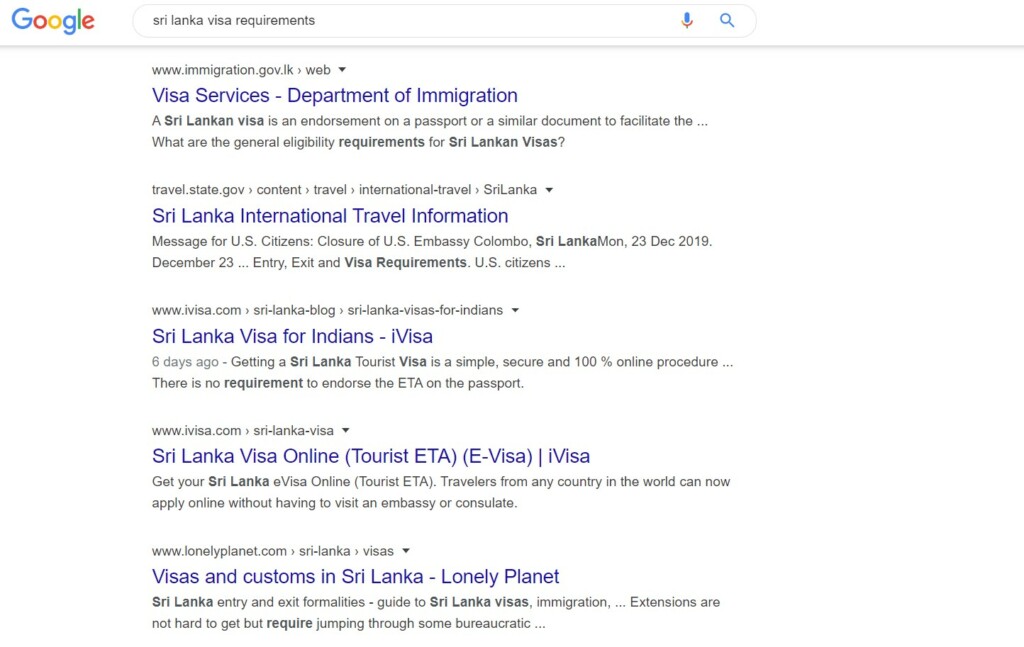
These domains are considered credible. You can also use dedicated software like Moz: it scans the internet for keywords and filters the results so that you can receive the list of most credible resources in the niche.
Guest Posts
Guest blogging is another great technique to get free quality backlinks and free blog content. It is when you write an article and publish it on another website in order to increase your brand exposure and authority.
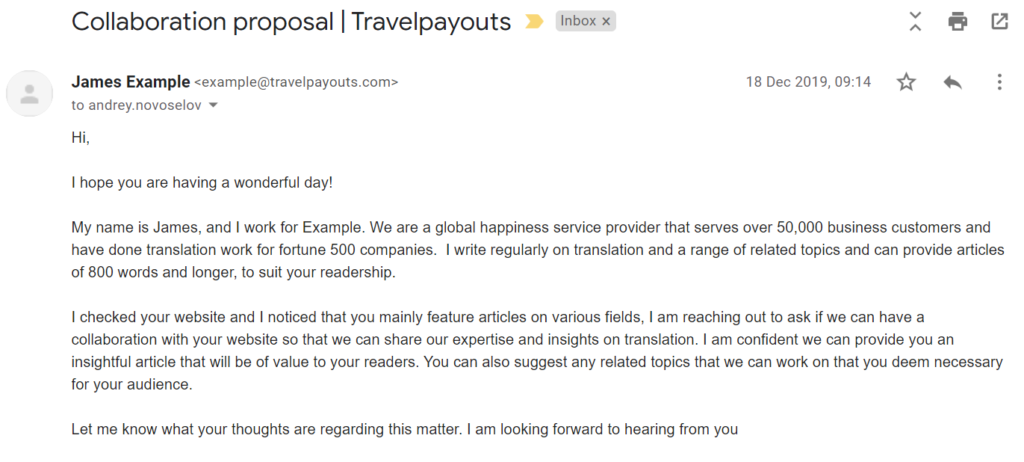
The key thing is to do it correctly, as Google opposes large-scale linking in guest posts, partner posts, etc.
Guest blogging aims to provide informative and useful materials for your colleagues in the niche rather than just promoting your blog.
To use guest blogging to your advantage and not violate Google’s rules, place a backlink in your author bio. Readers will be more likely to click on it if they enjoyed your material and won’t feel that it was an advertisement.
And, remember to guest blog only on reputable websites to avoid any drop in your site’s ranking.
Business Listings and Directories
Business directories are resources that list companies by niche, location and other criteria. They are aimed at helping people find a business they are interested in as quickly as possible.
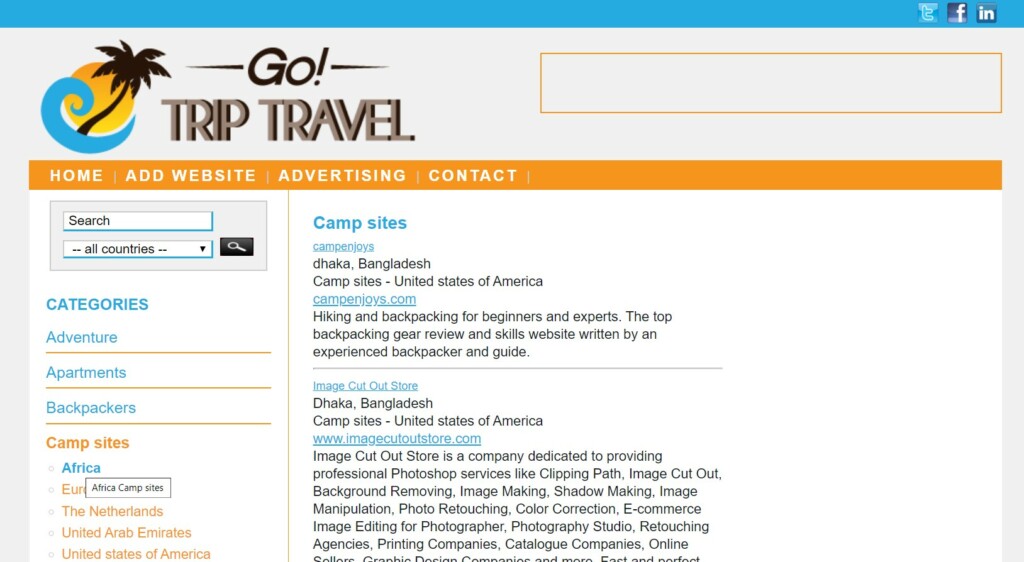
Companies, in their turn, receive additional opportunities to improve their discoverability and get one more backlink. Such blog submission in SEO might increase the exposure.
The key is not just to receive a backlink, but to place a well-known and high-quality domain in one, which many directories are not. Check the platform’s reputation with dedicated software or resort to directories featured on credible resources.
Press Releases
A press release is aimed at making an announcement for the media community. In terms of blog promotion, it doesn’t only inform people about your latest news, it is also a way to get one more backlink.

But to be useful, it should be done properly. First, make a statement only when you have important news to share, and second, choose only reputable platforms to publish on.
Make a research on the best press release distribution services within your niche and use them when appropriate.
Infographics
Infographics are a way to present information as accessible as possible to the general public. They include graphs, charts, diagrams, mind maps, etc. Such materials are often used to explain complex concepts or statistical data. Thus, infographics make your articles more shareable, increase traffic and generate backlinks.
Every large company uses visuals for promotion, and many businesses even customize such pictures to prevent plagiarism. To make it happen, your infographics should feature an eye-catching design, deliver useful information and be shareable. Here is what you can do to make sure your visuals are easy to share:
- Provide infographics with embed codes with the help of special software like SiegeMedia and more. Your pictures will include a special button that allows users to copy the code and insert it on their website:

- Make sure visuals are shareable on social media by using image sharing tools like Sumo or WordPress plugins. You’ll be able to add social buttons so that when a user places a cursor on the picture, these buttons appear:
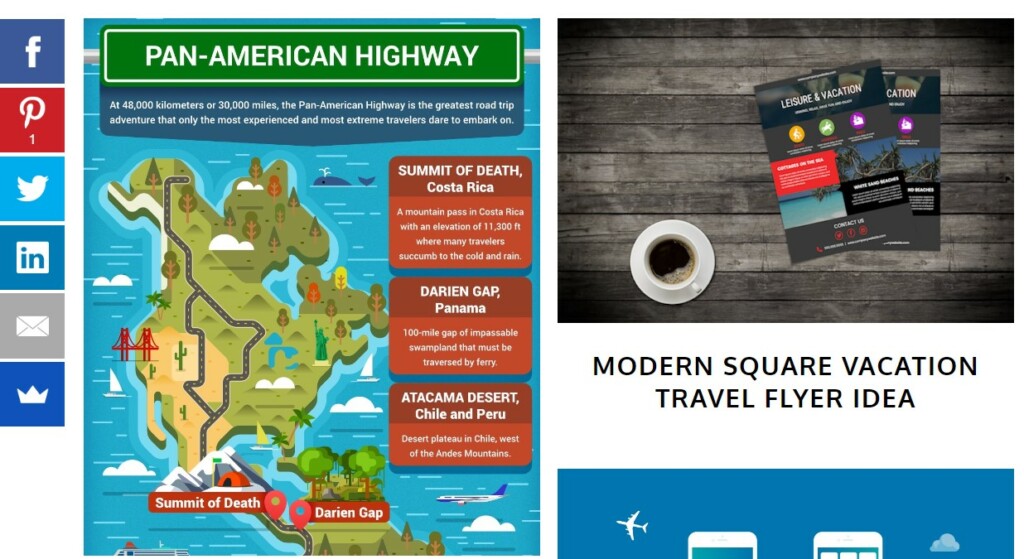
- Add a caption and description of what the picture presents to let Google find your article for the related keywords.
Nonprofits
If you have an experience of sponsorship, it can give you a backlink as well. Donating to good causes shouldn’t necessarily be a one-way street, and many companies want to repay by linking to your website and mentioning your brand on the website. Even though this promotion technique involves money, it isn’t normally considered spammy or aggressive.
You can donate to some organizations, sponsor an event, make a speech at a conference or provide any other type of assistance. Acknowledgment backlinks ideally come from businesses in the same niche.
What you can do is browse the upcoming events and donation alerts or make competitors’ research to find out where their backlinks come from.
There are many platforms accumulating names of nonprofits like GuideStar.
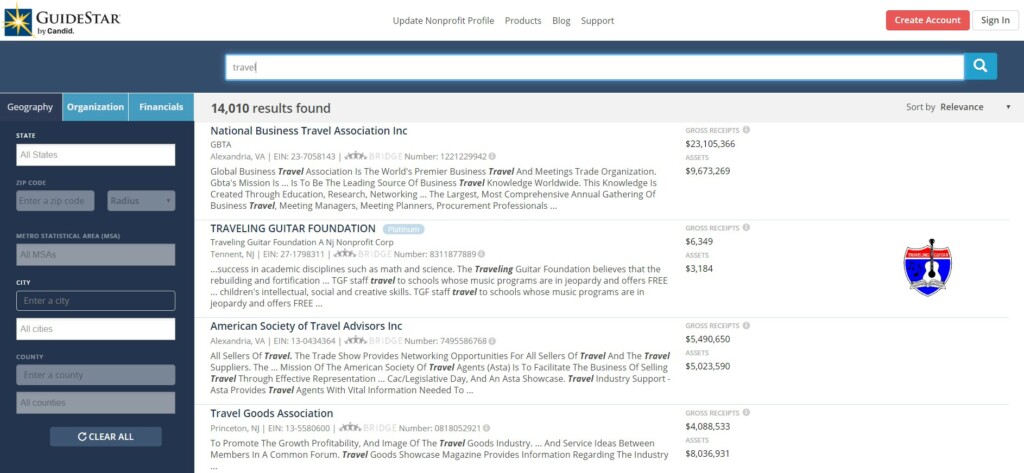
You’ll be able to filter organizations by location and other criteria to find the most suitable one. But stay wary of websites that spammers use to trick Google into not getting in trouble.
Testimonials
Testimonials are mainly written statements in favor of a product or a service. People leave them to express their opinion and help others find out about these great things.
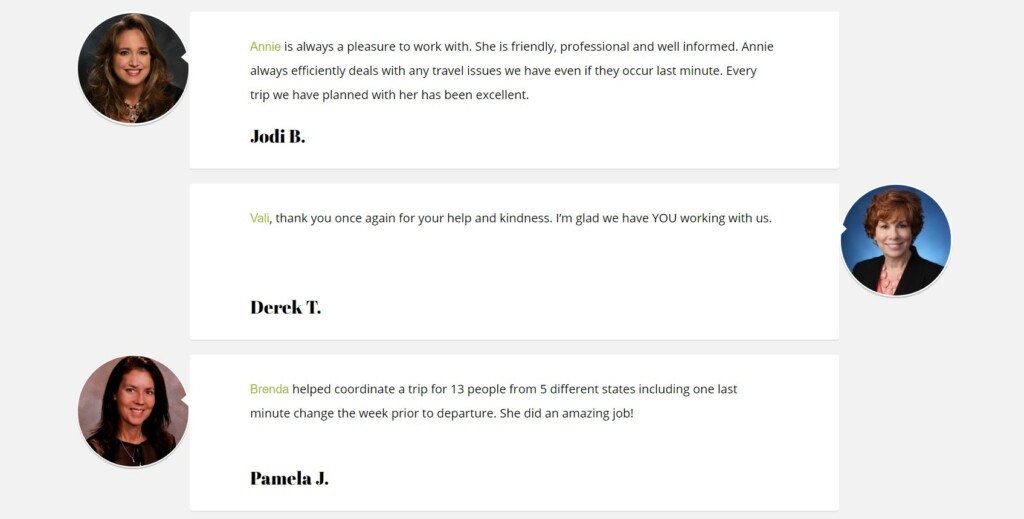
Use it to your advantage by writing testimonials for the products you’ve recently purchased and sending them to manufacturers or service providers. The majority of businesses link back to social profiles or personal blogs of people who leave testimonials, so it might be another way for you to get a backlink and increase traffic.
The more expressive your comment is, the more likely it is to be featured on the homepage of the producer and to bring you new visitors. Sometimes, testimonials include a short author bio, where you’ll be able to present your business in more detail.
Interviews
Interviews are nothing short of a great promotional technique to create backlinks to your site for free, and yet it isn’t always used by bloggers. If you have unlinked interviews in the past, reach out to their editors and ask to add a backlink to your website. As for upcoming interviews, make the most of them with the following tips:
- Propose mutually beneficial topics that would be interesting for the audience and let you mention multiple things about your blog to link to many articles.
- Offer to promote the interview in exchange for a few backlinks within the text.
- Ask for a follow-up interview or blog post, as the circumstances permit.
Most often, people are invited to give an interview, but you can make the first step and seek interview opportunities yourself.
Webinars
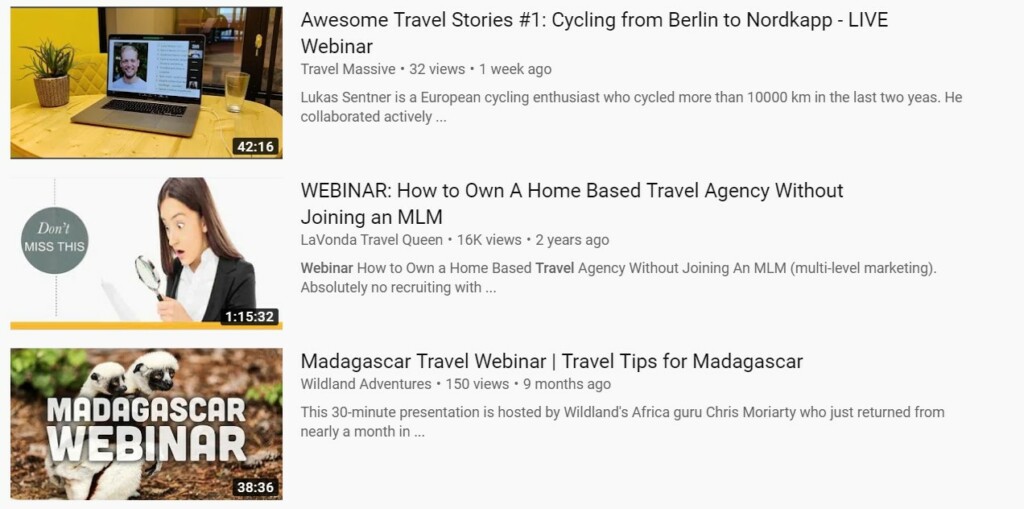
The more use you bring to the community, the more backlinks your blog acquires. One way to do so is by sharing valuable information, for example, webinars. Webinars are online seminars, and bloggers make a recording to get as many people to see them as possible.
Webinars attract more traffic and naturally increase the number of backlinks, as people like to share useful information. To make it easier for others to backlink to your webinars, make sure your videos are embeddable.
Free Tools
Just like webinars, free tools can also contribute to the success of your SEO campaign. People tend to share valuable assets, and free tools are likely to generate some buzz. It can be a basic tool or a demo of a paid instrument.
To find an idea, browse popular blogging tools like grammar and plagiarism checkers, tools for tracking affiliate links or travel blogging. There is always room for improvement if you have coding skills.
Surveys
Surveys are really useful sources of information which you put at your service. Bloggers are more likely to share your post if it contains statistical information or research. To get the best of it, make up a list of questions and use one of these tools to hold a poll. To increase your survey’s reach, include it in an email marketing campaign and share it on social media.
Promotions
Depending on your business, consider running a promotion or even a contest to boost traffic and generate more links. Even though it seems like a concession on your side, these campaigns naturally go viral and increase the blog’s reach. To build a contest, you’ll need to think of a prize that your followers can’t resist. It doesn’t have to be an iPhone. Why not a product or service of your own if it already has an established value? Aside from an increase in the referral traffic, such content can bring you up to 500 new subscribers, according to SmartBlogger.
Comments
Blog commenting for backlinks is another way for SEO promotion, although not a perfect one. It is now associated with spam rather than a good faith campaign, but many marketers still practice this technique, and so can you.

To do it right, pick only reputable websites within your niche, leave informative comments and insert your backlink every once in a while, where appropriate.
Forums and Q&A Websites
A reputable forum will be good for your blog’s SEO, as it brings organic traffic and reaches the target audience. However, this section comes right behind comments, because there is a fine line between worthy backlinks and not so worthy ones, coming from forums and Q&A platforms.
It all depends on the source’s reputation. As we have already mentioned, you can check the domain’s authority with special software or pick a forum mentioned on authoritative websites.
How to Monitor Backlinks
To take the best of link building, you need to monitor results and make appropriate adjustments on the way. When a new backlink appears, you might want to check whether it comes from a reputable website and send a thank-you note to prepare the ground for future cooperation.
On the flipside, links from dubious platforms also require action as they can downgrade your ranking. Also, when one of the old backlinks is removed, it can alert you that some information on your blog might have become outdated.
All in all, monitoring backlinks will let you be one step ahead. It’s possible to automate this process with special tools like BacklinkWatch, MoonSearch, and more. One good software is MonitorBacklinks: it allows you to find the most relevant domains, monitor the number of backlinks to your blog, track keyword ranking and analyze competitors.
What Backlinks Your Blog Really Needs
Linkbuilding is one of the most important search engine optimization techniques for your blog promotion.
The more backlinks you have, the more people are likely to discover your website. But today you should focus more on the quality of backlinks rather than their quantity, as Google toughens up its policies in light of spammy promotion techniques. As long as you resort to appropriate backlink sources, such as authoritative domains and good faith guest blogging, your blog is safe.




